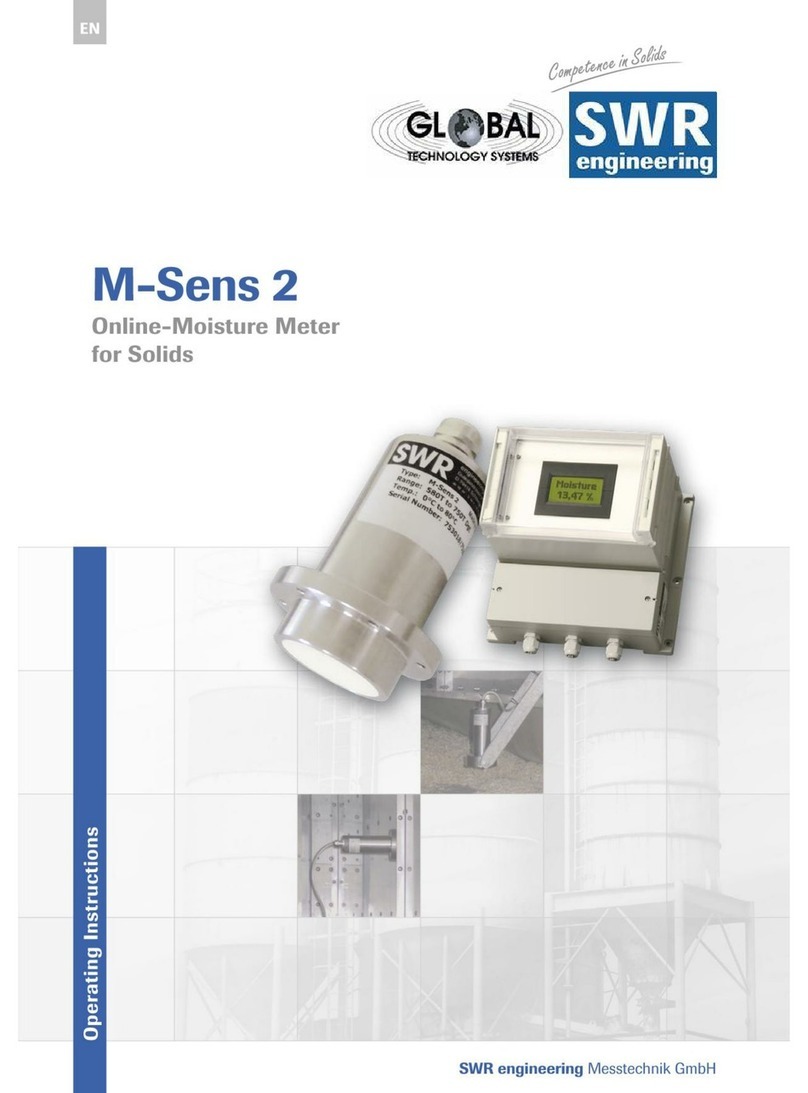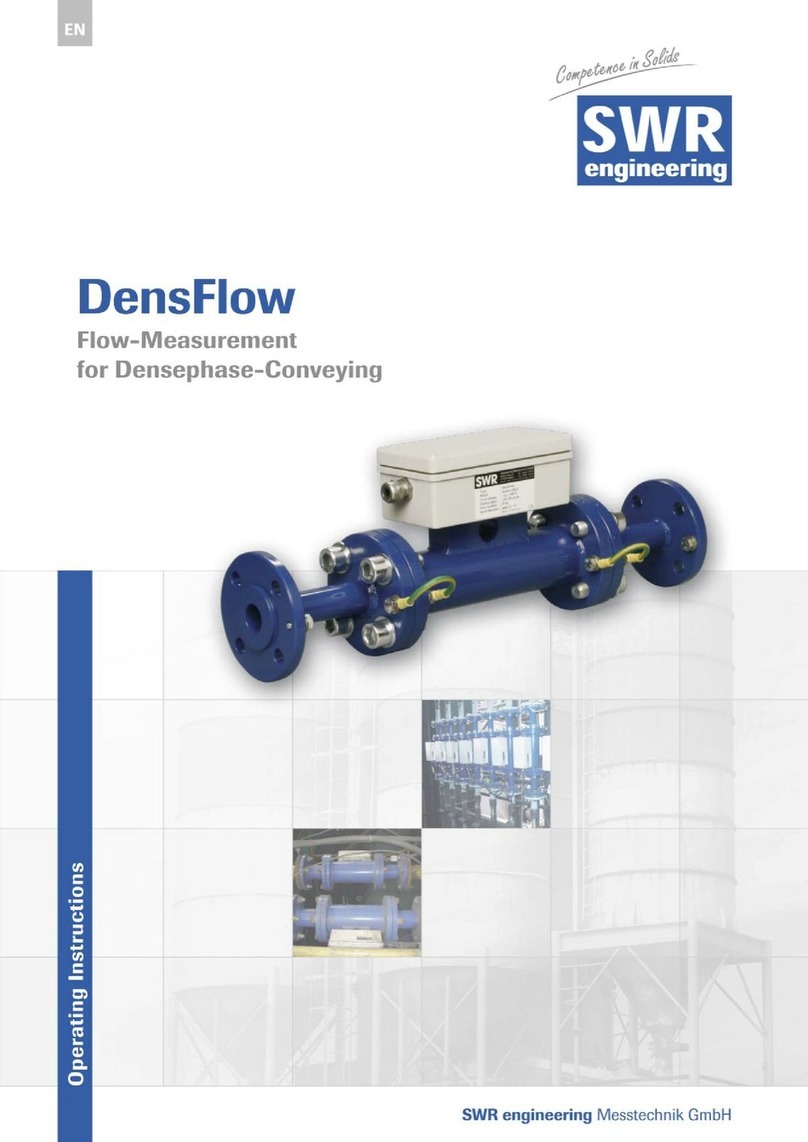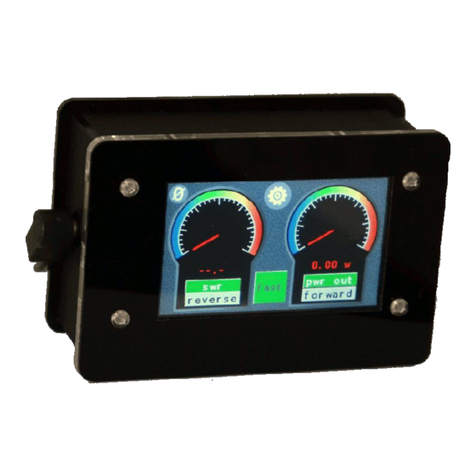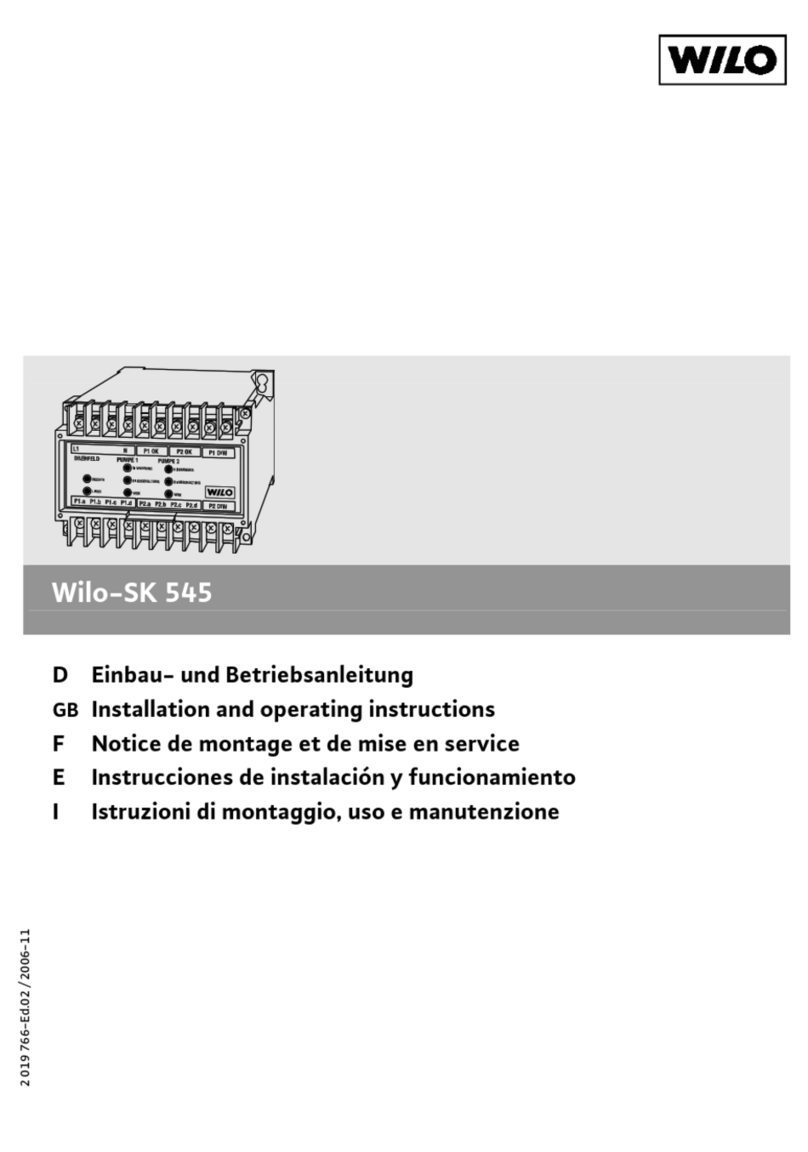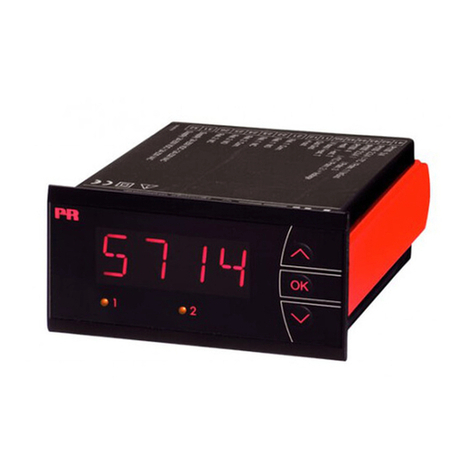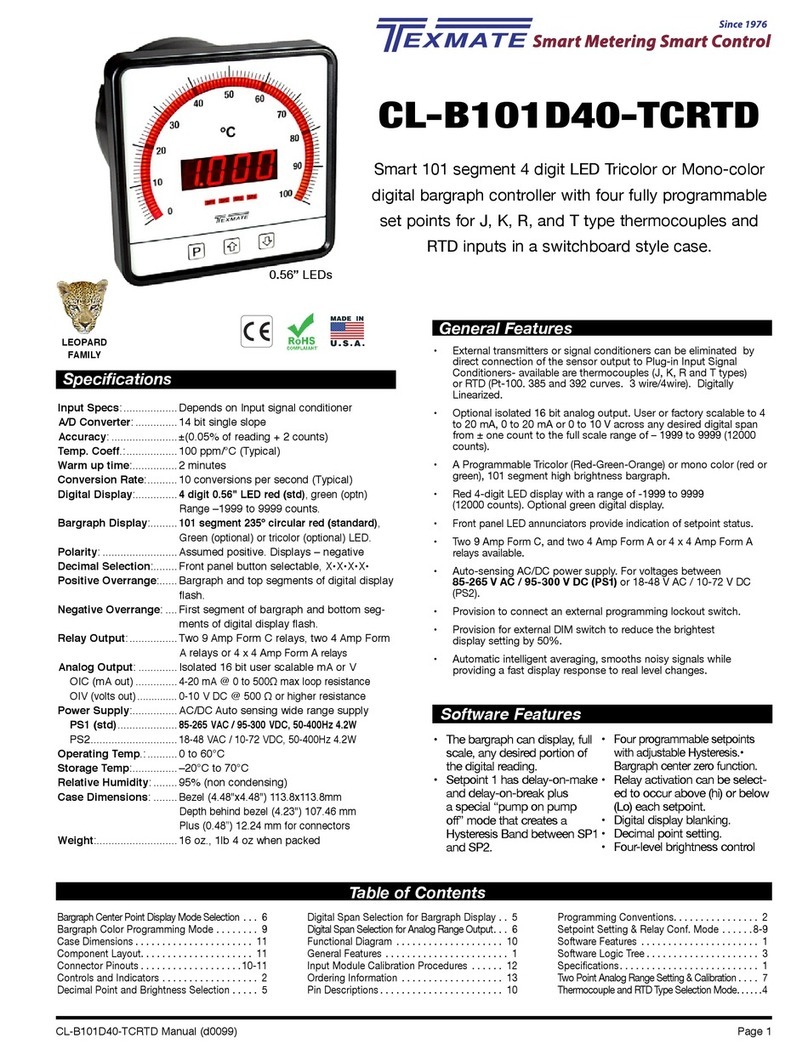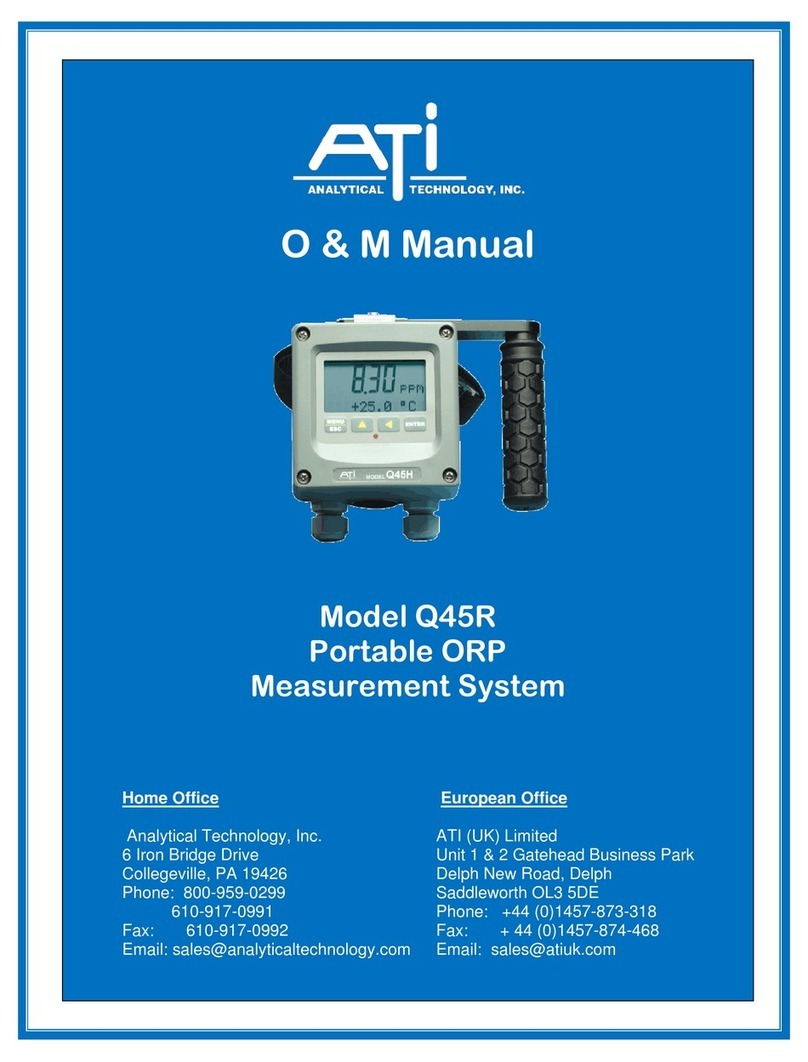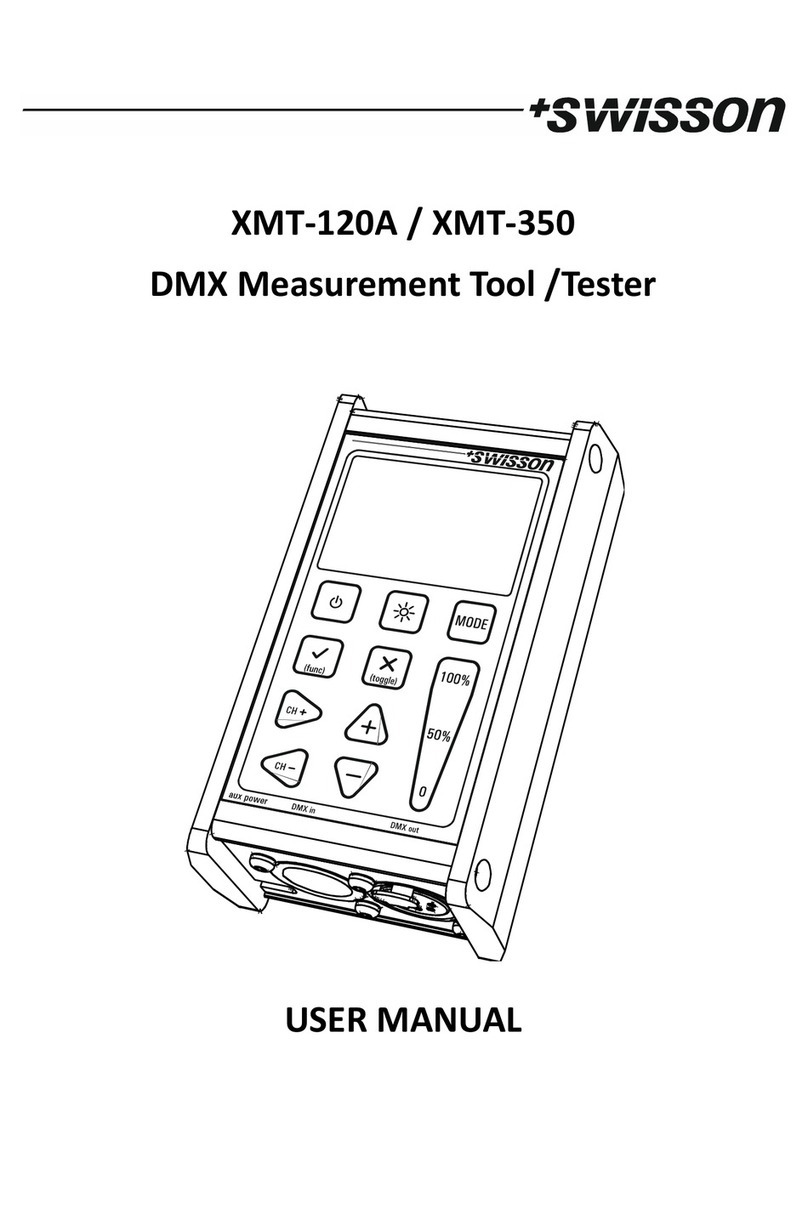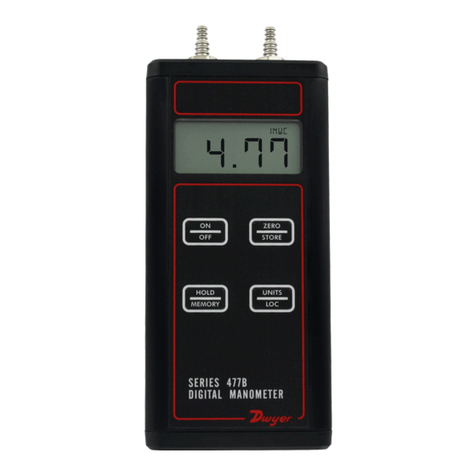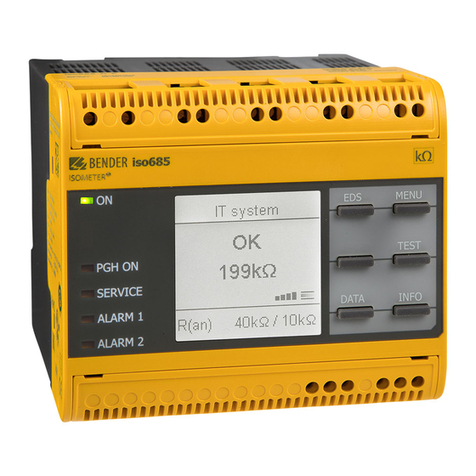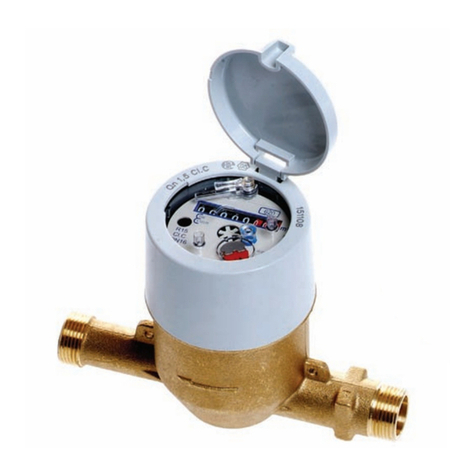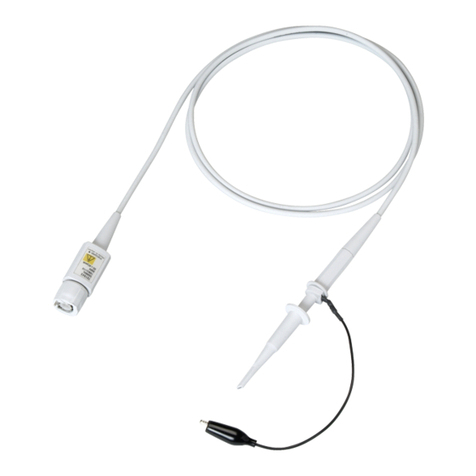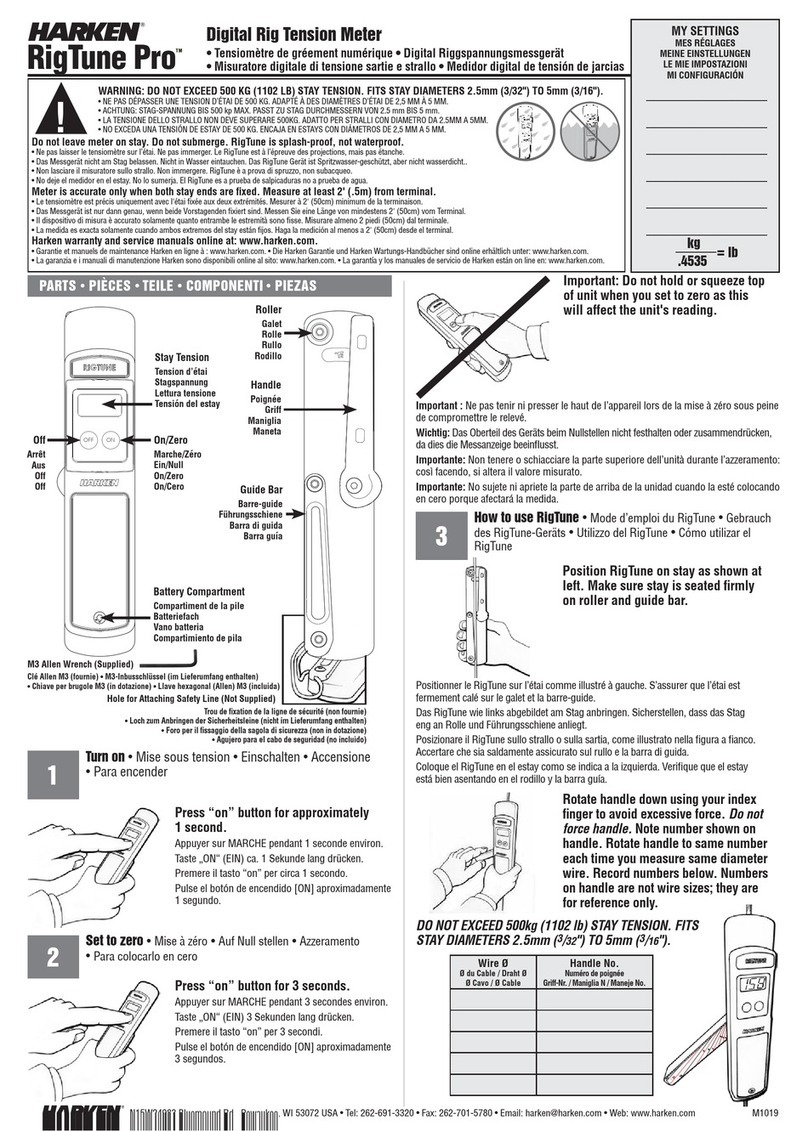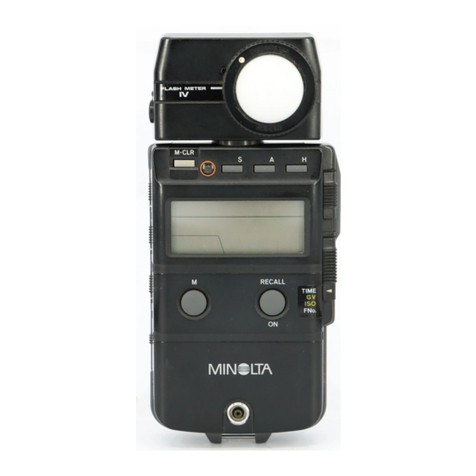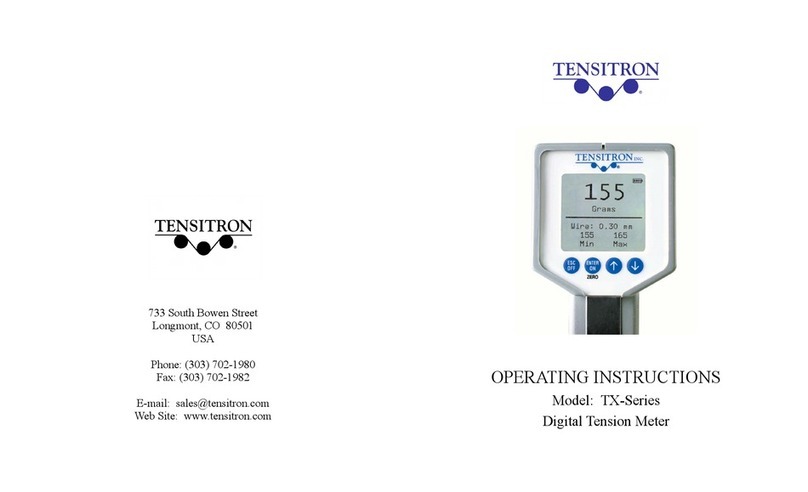SWR SolidFlow 2.0 User manual

EN
Operating Instructions
SolidFlow 2.0
Solid volume measurement

Operating Instructions
2
TABLE OF CONTENTS Page
1. System overview .......................................................................3
2. Function .............................................................................. 5
3. Safety ................................................................................ 6
3.1 Normal use ....................................................................... 6
3.2 Identification of hazards ............................................................ 6
3.3 Operational safety .................................................................. 6
3.4 Technical statement ................................................................ 6
4. Mounting and installation .............................................................. 7
4.1 Typical components of the measurement point . . . . . . . . . . . . . . . . . . . . . . . . . . . . . . . . . . . . . . . . . 7
4.2 Required equipment ................................................................ 7
4.3 Sensor installation ................................................................. 7
4.4 Mounting the transmitter .......................................................... 10
4.5 Use in hazardous areas ............................................................ 12
5. Electrical connection ..................................................................13
5.1 DIN rail terminal layout ............................................................ 13
5.2 Field housing terminal layout ....................................................... 14
5.3 C1-box terminal layout ............................................................. 15
5.4 C3-box terminal layout ............................................................. 15
6. Operator interface .................................................................... 16
6.1 Differences between the DIN rail and field housing transmitter . . . . . . . . . . . . . . . . . . . . . . . . . . 16
6.2 Display .......................................................................... 17
6.3 PC interface ..................................................................... 18
6.4 One or more sensor system ......................................................... 20
6.5 Menu structure ................................................................... 21
7. Start-up procedure ................................................................... 29
7.1 Basic start-up .................................................................... 29
7.2 Adjusting the measurement values .................................................. 29
8. Maintenance ......................................................................... 30
9. Warranty ............................................................................ 30
10. Troubleshooting ...................................................................... 30
11. Technical data ....................................................................... 31

Operating Instructions
3
1. System overview
A measuring point consists of the following components:
•Transmitter (in the DIN rail housing or field housing)
•Sensor mount for welding to the pipeline
•Sensor (union nut, spacer rings, sealing ring for adjusting to the wall thickness)
•Installation instructions
•C1- or C3-box
Sensor C1-Box Transmitter
max. 300 m
2 m
1 (+ 24 V)
2 (GND)
3 (A)
4 (B)
S (Earth)
C1-Box
Sensor
C1-Box
Sensor
16 (+ 24 V)
15 (GND)
14 (A)
13 (B)
Sensor C1-Box Transmitter
max. 300 m
2 m
Fig. 1: Overview with C1-box and field housing transmitter
Fig. 2: Overview with C1-box and DIN rail transmitter

Operating Instructions
4
TransmitterC3-Box
Sensor
Sensor
Sensor
2 m max. 300 m
1 (+ 24 V)
2 (GND)
3 (A)
4 (B)
Shield
The system can be equipped with up to three sensors. Different C-boxes (C1, C3) are used accordingly.
Fig. 3: Overview with C3-box and field housing transmitter
Fig. 4: Overview with C3-box and DIN rail transmitter
Transmitter
C3-Box
2 m max. 300 m
16 (+ 24 V)
15 (GND)
14 (A)
13 (B)

Operating Instructions
5
Fig. 5: Integration and reflection of microwaves
2. Function
•The SolidFlow 2.0 is a measuring system which has been specially developed for measuring the quantity
of solids conveyed in pipelines.
•The sensor works with the latest microwave technology. It is only used in metallic pipelines. The special
integration of microwave technology together with the metallic pipeline creates a homogeneous
measurement field.
•The microwave radiation in the pipeline is reflected by the solid particles and received by the sensor.
The frequency and amplitude of the received signals are analysed.
•The frequency-selected evaluation system ensures that only moving particles are measured and
deposits are suppressed.
•SolidFlow 2.0 features active stratification compensation which increases measurement accuracy.

Operating Instructions
6
3. Safety
The SolidFlow 2.0 measuring system has a state of the art, reliable design. It was tested and found to be in a
perfectly safe condition when leaving the factory. Nevertheless, the system components may present dangers to
personnel and items if they are not operated correctly.
Therefore, the operating manual must be read in full and the safety instructions followed to the letter.
If the device is not used correctly for its intended purpose the manufacturer's liability and warranty will be void.
3.1 Normal use
•The measuring system may only be installed in metallic pipes to measure the medium passing through
them.
It is not suitable for any other use or measuring system modifications.
•Only genuine spare parts and accessories from SWR engineering may be used.
3.2 Identification of hazards
•Possible dangers when using the measuring system are highlighted in the operating instructions with
the following symbols:
Warning!
•This symbol is used in the operating manual to denote actions which, if not performed correctly may
result in death or injury.
Attention!
•This symbol is used in the operating manual to denote actions which
may result in danger to property.
3.3 Operational safety
•The measuring system may only be installed by trained, authorised personnel.
•During all maintenance, cleaning and inspection work on the pipelines or SolidFlow 2.0 components,
make sure that the system is in an unpressurised state.
•Switch off the power supply before performing any maintenance work, cleaning work or inspections on
the pipelines or the SolidFlow 2.0 components. See the instructions in the section entitled Maintenance
and care.
•The sensor must be taken out of the pipeline before any welding work is performed.
•The components and electrical connections must be inspected for damage at regular intervals. If any
signs of damage are found, they must be rectified before the devices are used again.
3.4 Technical statement
•The manufacturer reserves the right to adjust technical data concerning technical developments without
notice. SWR engineering will be delighted to provide information about the current version of the
operating manual, and any amendments made.

Operating Instructions
7
4. Mounting and installation
4.1 Typical components of the measurement point:
•Transmitter in the DIN rail housing or field housing
•Sensor mount for welding to the pipeline
•Sensor (union nut, spacer rings, sealing ring for adjusting to the wall thickness)
•Installation instructions
•C1- or C3-box
4.2 Required equipment
•Ø 20 mm-twist drill bit
•32 mm open-ended spanner for union nut
•Locking ring pliers (Ø 20 mm) to adjust the sensor to the wall thickness
4.3 Sensor installation
Proceed as follows to install the sensor:
•Decide on the installation position on the pipe. It should be installed from the top on horizontal or
angled pipelines.
•Note: Depending on the application, up to 3 sensors can be used on pipeline diameters larger than
200 mm, whereby the sensors must be mounted 120 mm apart and offset in relation to each other at an
angle of 120°.
•The distances apply to vertical and horizontal installations.
•Ensure that the measurement point is at an adequate distance from valves, manifolds, blowers and
bucket wheel feeders and other measurement ports such as those used for pressure and temperature
sensors, etc. (See Fig. 6)
Fig. 6: Minimum distances of the measurement point from pipe geometries and fittings
•On free-fall applications (for example, after screw conveyors or bucket wheel feeders), a drop height of
at least 300 mm is ideal.

Operating Instructions
8
•Weld the sensor mount to the pipe.
•Drill through the pipe through the sensor plug (Ø 20 mm). Ensure that the borehole is not angled so that
the sensor can be installed precisely at a later stage.
Attention!
•After drilling, it is essential to check whether the drill bit has caused any burrs on the borehole edges.
Any burrs on the pipe must be removed using a suitable tool. If the burrs are not removed they may
affect the sensor's calibration.
•If the sensor is not installed immediately insert a plug until it is installed (see also Fig. 7). The plug must
be inserted together with the seal, two sealing rings and the locking ring, and secured using the union
nut.
Use a 32 mm open-ended spanner to tighten the union nut.
Fig. 7: Install the sensor mount
and the plug
Spacer ring 1 mm
Round seal 19 x 2
Sensor mount
Union nut
Locking ring
Plug
q
q
q
q
q
q
q
•Remove the sealing plug to insert the sensor.
•The sensor is supplied pre-assembled for the specified wall thickness or, if no wall thickness was
specified, to a wall thickness of 4 mm. Check again that it is correctly adjusted before installation
(see table). If necessary, the wall thickness must be remeasured using a depth gauge. The weld-on
socket is 93 mm long. It is important that the sensor does not project into the pipe. The sensor may be
up to 1 mm inside the pipe wall without this causing a measurement error.
Wall thickness (mm) Position on the sensor neck Number of spacer rings
3.0
4.0
5.5
6.5
8.0
9.0
10.5
11.5
13.0
14.0
1
1
2
2
3
3
4
4
5
5
2
1
2
1
2
1
2
1
2
1

Operating Instructions
9
•Now insert the sensor into the sensor guide as shown in Figure 8a.
Fig. 8a: Install the
sensor mount
and the sensor
Sensor mount
Round seal 19 x 2
Spacer ring(s) 1 mm each
Locking ring 20 x 1.2
Padding ring 1 mm
Union nut
Sensor
q
q
q
q
q
q
q
1
2
• and align it longitudinally to the pipe axis as shown on the polarisation sticker (Fig. 8b).
Then seal the measurement point with the union nut.
Fig. 8b: Sensor alignment
▼
Flow direction
• Make sure you install a drip loop with the cable anywhere it may get wet to prevent
water flow from reaching the sensor.
Drip Loops

Operating Instructions
10
Fig. 9: DIN rail housing for the transmitter
Fig. 10: Field housing for the transmitter
4.4 Mounting the transmitter
•The entire transmitter can be installed at a maximum distance of 300 m from the sensor.
The housing is prepared for installation on a DIN rail according to DIN EN 60715 TH35.
23
90
118
35
90 120
244
254
237

Operating Instructions
11
Fig. 11: C1-box dimensions
Fig. 12: C3-box dimensions
Cable gland
M 16 x 1,5

Operating Instructions
12
Ex hazard array
DustEx zone 20
GasEx zone 1
No Ex hazard array
Zone 21/22
Zone 1/2
Tmax =
150 °C
Tmax = 60 °C
C1-Ex-Box
4.5 Use in hazardous areas
Dust explosion zone identification: II 1/2D Ex tD IP 65 T84 °C
Zone 20: 0 °C _< Tprocess _< 80 °C
Zone 21: -10 °C _< Tamb _< 60 °C
- Equipment group 2
- Equipment category: 1/2
Waveguide window zone 20 / housing zone 21
- For explosive mixtures of air and combustible dust
- IP code 65
- Maximum surface temperature 84 °C at Ta = 60 °C
Gas explosion zone identification: II 1/2D Ex tD A20/21 IP 65 T84 °C
II 2G Ex d IIC T5/T3
- Equipment group 2
- Equipment category: 2
- Zone 1
- For explosive mixtures of air and combustible gases
- IP code 65
- Permitted process temperature 0 to 150 °C
- Temperature class T3
- Maximum surface temperature 84 °C at Ta = 60 °C

Operating Instructions
13
5. Electrical connection
5.1 DIN rail terminal layout
Current output
- 4 ... 20 mA
Current output
+ 4 ... 20 mA
Input
Power supply
0 V DC
Input
Power supply
+ 24 V DC
Not used Alarm relay
NC (break contact)
Alarm relay
C
Alarm relay
NO (make contact)
1 2 3 4
5 6 7 8
Not used Not used RS 485
Interface
Data B
RS 485
Interface
Data A
Sensor connection
Cable 4
RS 485
Data B
Sensor connection
Cable 3
RS 485
Data A
Sensor connection
Cable 2
Power
supply 0 V
Sensor connection
Cable 1
Power
supply + 24 V
Fig. 14: Electrical connection of the transmitter
9 10 11 12
13 14 15 16
1 2 3 4
5 6 7 8
9 10 11 12
13 14 15 16

Operating Instructions
14
Transmitter
Terminal No. Connection
Power supply connection
L / +24 V Input power supply 230 V / 50 Hz, 110 V / 60 Hz (optional 24 V DC)
N / 0 V Input power supply 230 V / 50 Hz, 110 V / 60 Hz (optional 24 V DC)
Earth Earth
Connections
I-out1 + Current output +
- Current output -
Na Not used
Na Not used
Na Not used
Na Not used
Min. /
Max. relay
NO Floating change-over contact NO (make contact)
C Floating change-over contact C (common conductor)
NC Floating change-over contact NC (break contact)
D-out + Digital pulse output +
- Digital pulse output -
RS 485
A RS 485 interface data A
B RS 485 interface data B
GND RS 485 interface ground
D-in1 + Digital interface 1 (+)
- Digital interface 1 (-)
D-in2 + Digital interface 2 (+)
- Digital interface 2 (-)
Sensor
+ Power supply + 24 V Cable no. 1
GND Power supply 0 V Cable no. 2
A RS 485 data A Cable no. 3
B RS 485 data B Cable no. 4
Shield Shield Shield
5.2 Field housing terminal layout
Fig. 15: Electrical connection

Operating Instructions
15
5.3 C1-box terminal layout
Fig. 16: Electrical connection
Cable gland
M 16 x 1,5
Sensor 1 Transmitter
Transmitter Sensor 1 Sensor 2 Sensor 3
Fig. 17: Electrical connection
5.4 C3-box terminal layout

Operating Instructions
16
6. Operator interface
The operator interface differs depending on the system design:
•DIN rail housing without display, operation via PC software
•Field housing with display, alternative operation via PC software
•One to three sensor system
First of all, the different system versions are described below. Following that, the basic operation of the
SolidFlow 2.0 system as a one sensor system is then described without going back over the different versions.
6.1 Differences between the DIN rail and field housing transmitter
The transmitter in the DIN rail housing is only a part of the functions available in the field housing.
The following overview clarifies the differences between the two versions.
Function Field housing DIN rail
Menu system
•via PC software yes yes
•via display yes no
Measurement value display current output yes yes
Measurement value display pulse output yes no
Alarm system relay output yes yes
Remote control digital input yes no
Autocorrect analogue input yes no
Totaliser display yes no
•via PC software yes yes
•via display yes no
Error output
•on current output yes yes
•at relay yes yes
•via PC software yes yes
•via display yes no
•on status LED no yes
The transmitter in the DIN rail can only be configured via a serial connection and a PC program. On the
transmitter in the field housing, all functions can be configured by menu via the touch-sensitive display.
The field housing transmitter can also be configured by PC.
The menu items on the display and in the PC software are numbered in a uniform manner so that
they can be referred to later on.

Operating Instructions
17
6.2 Display
If just the display is used, all the main functions can be controlled via the display. The display is touch-
sensitive and available keys are displayed directly in context.
The start page display the following values:
•Tag No “SolidFlow“, freely selectable text which
describes the material or the measuring point
•Measurement, here in [kg/s]
•Totaliser value since the last totaliser reset,
here in [kg]
•[ I ] key for info
•[ R ] key for totaliser reset
To access the menus, press and hold any area of the display
for several seconds.
The sub-menu selection will be displayed:
In the menus and input fields, the displayed keys can be
used to browse, select, edit or reject:
•Arrow: Scroll down the page, Select an option,
Select a position in the input text
•[ E ] for ESC: Interrupt the function without making any
changes
•Return: Select the function or confirm the input
•[ C ] for Clear: Delete a symbol or number.
If any data has been changed, the change will only be taken
into account when you exit the complete menu structure and
answer [ Yes ] when asked if you wish to save the changes.
For reasons of simplicity, a further display menu screen
has been dispensed with.
The display screens are directly derived from the menu
structure in chapter 6.5.
Protection against unauthorised use:
If, a password has been entered in menu 7. System in 7.6.
Password , which is different to the “0000” default setting,
you will be asked to enter a password when attempting to
access the menus. After the password has been successfully
entered, the menus will be unlocked for approx. 5 minutes
(from the last menu entry).
SolidFlow
41.23 kg /s
3728.25 kg
I
R
E
Main menu 3.00
1. Measurement range
2. Calibration
3. Alarm
4. Analogue output
#
$
8
Save changes?
Y N

Operating Instructions
18
6.3 PC interface
With the DIN rail version, communication with a laptop or PC is performed either on the terminals via an
RS 485 or at the front via an RS 232 interface. The field housing version is connected to the terminals via an
RS 485 interface or at the front via USB.
✔ The RS 485 connection is attached to the transmitter in the field housing at the ModBus A (+)
and ModBus B (-) terminals On the DIN rail version, these connections are
nos. 12 and 11, accordingly.
RS 485 is a bus connection; the ModBus address and the baud rate can be set on the device. Upon
delivery, the communication parameters are set to:
•ModBus address 1
•Baud rate 9600, 8, E,1
An RS 485 to USB adapter can be purchased from SWR.
✔ For the RS 232 connection to the DIN rail version, a special cable and USB converter
are supplied. USB uses a standard USB-A-B cable.
RS 232 and USB are point-to-point connections which are not bus-compatible. The ModBus address
and baud rate for the front connections cannot be changed and are always:
•ModBus address 1 (or the device answers to all addresses)
•Baud rate 9600, 8, E,1 - When connected to the PC for the first time, any interface drivers enclosed
with the transmitter must be installed.
After starting the software, the communication parameters must first be entered accordingly. These can
be found in the top left of the program window.
Communication is established by clicking on “Read device”. The acknowledgement message
“Parameter read in” is displayed. If an error message is displayed instead, check the
communication parameters and cable connections between the PC and the transmitter.

Operating Instructions
19
The edited data is transmitted to the transmitter via “Device program”.
Critical data concerning the ModBus communication and the calibration must be confirmed before the
parameters are transmitted to the transmitter:
✔ If, when saving the the parameters in the transmitter, the system calibration data
is changed, this action must be confirmed by checking “Overwrite calibration”.
✔ If, when saving the the parameters in the transmitter, the system interface parameters
are changed, this must be confirmed by checking the selection “Overwrite Baud/Addr.”.
In addition, with the PC software,
•the transmitter parameters can be saved in a file (Save configuration)
•the transmitter parameters can be loaded from a file (Load configuration)
•the transmitter parameters can be printed (Print configuration)
•the measured values can be logged in a data logger file (enter the file name and storage rate, and
activate the data logger on the online display)
The software language can be set by right-clicking the “Sprache/Language/Langue” field in the bottom
program line on “German/English/French”.
Protection against unauthorised use:
The PC interface does not have a password prompt as it is assumed that only authorised personnel will have
access to the PC and the software. However, the password to operate the display can be read and changed
in menu 7. System in 7.6. Password.

Operating Instructions
20
6.4 One or more sensor system
Up to three sensors can be connected to a transmitter if, for example, a larger flow section needs to be
illuminated. In the transmitter, the corresponding number of sensors will then be registered and a joint
average value will be calculated from their measurements.
The sensors are registered in menu 7 (System):
The existence of several sensors is shown on the online display and in the info area on the display.
Apart from registering the sensors and the resulting monitoring of several sensors by the transmitter, this
function has no effect on the operation and will not be described in any more depth.
Table of contents
Other SWR Measuring Instrument manuals
